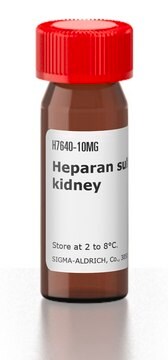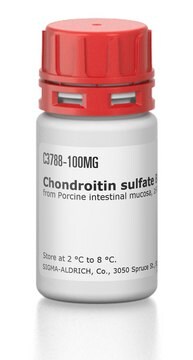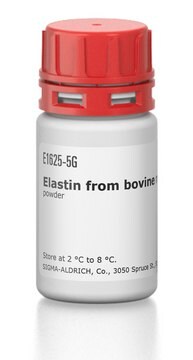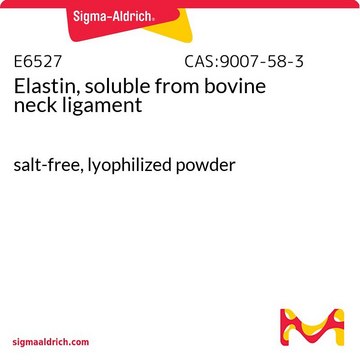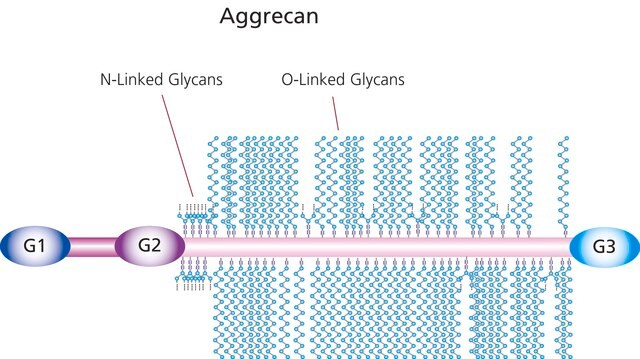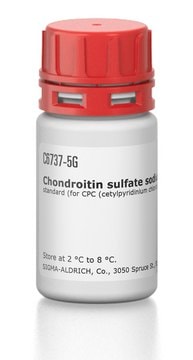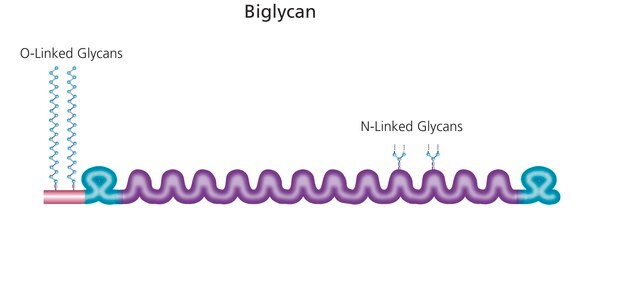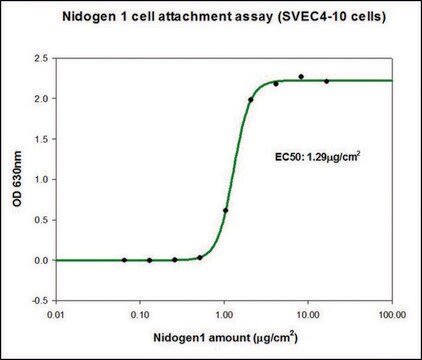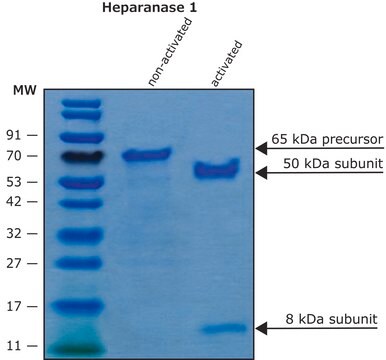H4777
Heparan sulfate proteoglycan
≥400 μg/mL glycosaminoglycan
Synonim(y):
HSPG
About This Item
Polecane produkty
pochodzenie biologiczne
mouse (Engelbreth-Holm-Swarm mouse sarcoma basement membrane)
Poziom jakości
opis
For cell culture use.
Isolated from basement membrane of Engelbreth-Holm-Swarm mouse sarcoma.
Solution in 50 mM Tris HCl, 150 mM NaCl, 1 mM EDTA, 0.1 mM PMSF, pH 7.4, containing ≥400 μg protein per ml.
Formularz
solution
masa cząsteczkowa
≥400 kDa
opakowanie
pkg of 0.1 mg
stężenie
≥400 μg/mL glycosaminoglycan
metody
cell culture | mammalian: suitable
zanieczyszczenia
≥100 μg/mL Uronic acid
numer dostępu NCBI
numer dostępu UniProt
Specyficzność wiązania
Peptide Source: Collagen Type IV
Peptide Source: Fibronectin
Peptide Source: Laminin
Warunki transportu
dry ice
temp. przechowywania
−20°C
informacje o genach
mouse ... Hspg2(15530)
Opis ogólny
Zastosowanie
- in phosphate buffered saline (PBS) and added to fresh citrated blood samples to achieve trauma-equivalent concentrations in a research study
- solid phase binding assay
- for fabrication of extracellular matrix (ECM) microarray slides
Działania biochem./fizjol.
Komponenty
Przestroga
Uwaga dotycząca przygotowania
Kod klasy składowania
11 - Combustible Solids
Klasa zagrożenia wodnego (WGK)
WGK 3
Temperatura zapłonu (°F)
Not applicable
Temperatura zapłonu (°C)
Not applicable
Środki ochrony indywidualnej
Eyeshields, Gloves, type N95 (US)
Wybierz jedną z najnowszych wersji:
Masz już ten produkt?
Dokumenty związane z niedawno zakupionymi produktami zostały zamieszczone w Bibliotece dokumentów.
Klienci oglądali również te produkty
Produkty
Dowiedz się więcej o glikozoaminoglikanach i proteoglikanach, w tym o strukturze glikozoaminoglikanów (GAG), różnych typach GAG i ich funkcjach.
Glycosaminoglycans are large linear polysaccharides constructed of repeating disaccharide units.
Nasz zespół naukowców ma doświadczenie we wszystkich obszarach badań, w tym w naukach przyrodniczych, materiałoznawstwie, syntezie chemicznej, chromatografii, analityce i wielu innych dziedzinach.
Skontaktuj się z zespołem ds. pomocy technicznej